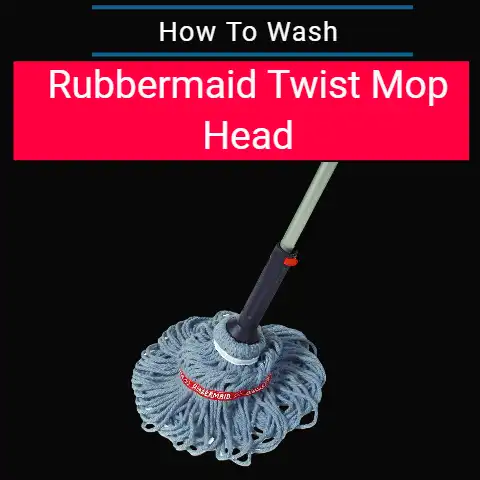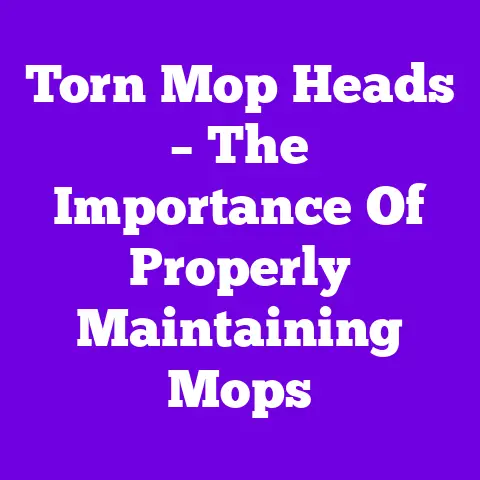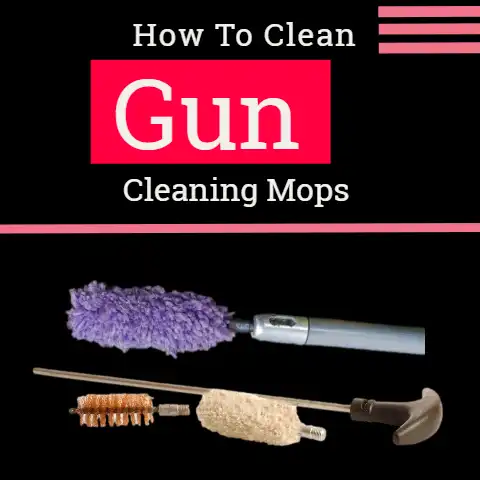Proper Mop Storage To Prevent Rapid Deterioration (Guide)
Keeping your mops in good working condition is essential for effective floor cleaning. However, many people make mistakes when storing mops that lead to rapid deterioration in quality and performance. Properly storing your mops can significantly extend their lifespan, saving you time and money on frequent replacements.
By the end, you will have the knowledge to properly store any type of mop to prevent rapid deterioration. Let’s get started!
Where to Store Mops
Choose a Dry, Dark Location
The ideal mop storage location is somewhere dry and dark. Dampness and sunlight are two major causes of damage over time. Here are some good places to store your mops:
- A closet or small storage room
- Under the kitchen sink
- In the garage or basement if they are dry
Avoid storing mops anywhere with excess moisture or humidity. Also keep them out of rooms with open windows where sunlight can stream in.
Use Wall Mounts or Freestanding Racks
The best way to store mops is on wall-mounted holders or freestanding storage racks. Leaving mops leaning against a wall or lying on the floor can bend and misshape the mop heads over time.
Proper storage racks allow air circulation to dry mops between uses. They also provide support to maintain the original mop head shape.
Separate Clean and Used Mops
Be sure to keep clean mops separate from those used to clean dirty floors. Store them in different holders or on separate sides of a storage rack. This prevents cross-contamination of grime and bacteria.
Proper Drying of Mops
Squeeze Out Excess Water
The #1 cause of mop deterioration is leaving them wet between uses. Any moisture left trapped for prolonged periods encourages mold growth. It also rots natural materials like wood and cotton.
After mopping, thoroughly wring out excess water. Twist, squeeze, and press until no more liquid drips out. Removing moisture prevents musty odors and rapid decay.
Allow Adequate Drying Time
Even after squeezing out liquid, mops will still contain dampness deep in the fibers. You must allow enough time for complete air drying before the next use.
For natural fiber string mops, allow at least 24 hours of drying time. For very thick yarn mops, 48 hours is better.
Sponge mops and microfiber pads may only need 2-4 hours if squeezed thoroughly. But allowing longer is better to prevent lingering moisture.
Use Fans to Accelerate Drying
If you need to reuse mops quickly, use fans to accelerate drying time. Set wet mops in front of portable fans or point floor fans upwards. The strong air circulation will dry fibers faster.
Rotate mops every few hours so all sides get evenly dried. Check sections near the ends for hidden moisture. Continue using the fans until mops feel completely dry all the way through.
Proper Storage Methods by Mop Type
String Mops
String mops easily lose their shape if left lying flat for too long. The weight of the wet strings pressing down can flatten and distort the mop strands.
To maintain string shape:
- Hang string mops vertically from wall hooks or racks between uses
- Make sure the strings are not bunched up or tangled
- For racks, use slots that hold mops vertically without squeezing strands sideways
If the strings become bent:
- Soak the mop head in hot water to soften the fibers
- Gently pull and stretch the strands straight by hand
- Hang to dry vertically to regain the original shape
Sponge Mops
The main goal for sponge mop storage is allowing the sponge pad to dry thoroughly. Leftover moisture causes odor issues and decay over time.
To keep sponge mops fresh:
- Squeeze out excess liquid after use
- Hang mops upside down or store vertically
- Make sure air can circulate all around the mop head
- Separate the sponge pad if your mop allows easy removal
Change your sponge mops every 2-3 months. The porous foam will gradually absorb grime and bacteria that can’t be fully sanitized.
Microfiber Mops
Microfiber mop pads require careful drying to prevent mildew growth. The dense, woven fabric takes longer to fully air dry.
To dry microfiber properly:
- Rinse pads thoroughly after dirty mopping jobs
- Use fans to speed air circulation through the fabric
- Change pad orientation to expose damp sections
- Hang pads or lay flat for drying – don’t bunch up
Also replace your microfiber pads every 3-6 months. Gradually, microscopic debris works its way into the tight weave. This reduces cleaning performance over time.
Spin Mops
Spin mops use centrifugal spinning to remove excess water from the mop pads. But you’ll still need to allow drying time between uses.
For spin mops:
- Disassemble to remove mop pads after spinning
- Rinse pads if mopping up dirty water
- Allow pads to dry completely before reattaching
- Store mop unit upright or hanging to prevent leaks
Avoid leaving wet pads sitting bunched up inside the spin basket. Take them out and lay flat or hang individually for quickest drying.
Mop Maintenance and Care
Wash Removable Mop Heads
Many mops allow you to detach the mop pad or head for machine washing. Cotton-yarn string mops, microfiber pads, and sponge mops can usually be laundered.
Wash mop heads once a week or whenever they seem dirty. Use hot water and add bleach or sanitizing detergent. This helps kill bacteria and odor-causing mold from developing.
Be sure to rinse thoroughly to prevent chemical residue getting left behind on floors. Also replace worn-out mop heads every 6-12 months for best cleaning performance.
Disinfect Handles and Hardware
Mop handles and frames should be disinfected regularly to prevent transfer of germs and grime to your hands:
- Mix non-abrasive bathroom cleaner with hot water
- Dip a rag into the cleaner and wipe down all mop hardware
- Rinse with a fresh rag and clean water
- Allow metal components to air dry fully
Deep clean handles and frames every month. Also spot clean immediately after use for messy mopping jobs involving dirt or potential pathogens.
Use Protective Storage Bags
For long-term mop storage or keeping infrequently used spares, use protective bags. Breathable cotton sacks allow ventilation while keeping off dust and debris.
Plastic storage bags also work well. But take extra care to ensure mops are completely dry first to prevent trapped moisture and mold growth while sealed.
Freshen Musty Mops
If mops develop a stale, musty odor from inadequate drying:
- Mix 1 cup baking soda + 5 drops essential oils into 1 gallon of warm water
- Soak the mop head for 20 minutes
- Rinse clean
- Allow to dry fully before next use
The baking soda will help absorb and neutralize musty odors from mold or mildew. The essential oils give mops a fresh, clean scent.
FAQs About Mop Storage and Care
How do I wash a cotton string mop?
Remove the mop head and place in the washing machine. Wash with hot water and detergent or bleach. Use a gentle cycle to avoid tangling strings. Air dry completely before reattaching to the handle.
Where is the best place to store a mop?
Store mops in a cool, dry location out of direct sunlight. Ideal places are closets, basements, garages, or under sinks if well ventilated. Use wall hooks, racks, or buckets to keep mop heads upright and supported.
How do I get bad smells out of a sponge mop?
Soak the sponge head in diluted bleach water for 15 minutes. Rinse clean and allow to dry completely. Replace heavily soiled sponge heads. Avoid leaving wet mops bunched up.
Why does my spin mop smell bad?
Spin mops can trap moisture and grime inside handles or buckets if not cleaned. Regularly rinse all mop parts and air dry fully between uses. Disinfect handles and hardware to prevent odors.
How often should you replace a microfiber mop?
Replace microfiber mop pads every 3-6 months. The dense fabric gradually traps microscopic dirt and bacteria over time. This reduces cleaning effectiveness even after machine washing.
Conclusion
Properly storing your mops helps maintain quality and extend lifespan, while preventing rapid deterioration in performance. Ensure mops dry fully between uses and follow preventative care and maintenance steps. Investing a little time into proper storage pays off with better cleaning results for years to come.
Implementing these best practices for where and how to store your mops will keep them in great shape for all floor cleaning tasks.






